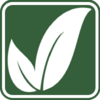| 500Foods shared this story from |

A loss in germination of just a few percent translates into a similar reduction in profit. Each species has a specific temperature at which the seeds germinate the quickest; these temperatures can easily be found on the Internet.
The ideal environment for germination is a temperature-controlled germination room. If you wish to grow a number of different species at the same time, look at the germination tables and choose a compromise temperature; this may not be ideal for each species, but will enable all the plants to germinate well. It’s usually in the mid-20°C range.
Preparation
Stack the planted seed trays, which should be filled with growing medium and moist, in the germination room.
If the growing medium is at the correct temperature at stacking, the trays can be placed on top of one another without spacing. If not, put thin strips of wood or something similar between the trays to enable air to circulate between them to stabilise the temperature.
If there is no gap, the growing medium may decompose and heat up, like a mini compost heap, thereby compromising germination. Always check the temperature between the trays.
It is important to inspect the germination status daily. If you wait too long after the plants have germinated before placing them in the nursery, they will end up with long, weak stems rather than the sturdy plants you are looking for.
Beware of getting into a routine and assuming you know how long the plants will take to
become ready for removal; you might end up with a batch that germinates faster and catches you out!
Some seeds that are exposed to heat will enter thermal dormancy. Lettuce seed is notorious for this. If not placed in a cool germination room, seed with this problem will germinate erratically.
Often, a percentage will suddenly germinate and then, when these are well advanced, the rest will germinate, resulting in staggered timing, which can be a nightmare.
If you have a problem batch of lettuce seed or are trying to germinate seeds under hot conditions, prime the seed by soaking it in water of 15°C to which you have added 1% potassium phosphate.
Begin by weighing the seed. Then place it in the water solution for 12 hours and dry it on paper until it reaches its original weight. This seed can be kept for several months.
Oxygen
Seeds require oxygen for germination. If you place the seed trays outside under netting and they get soaked by rain before germination is initiated, the lack of oxygen in the growing medium may kill the seeds. A germination room helps reduce this potential problem.
Another advantage of using a germination room is that it frees up room in your nursery. By keeping seeds in the room for a few days instead of placing them in the nursery straightaway, you are effectively increasing your nursery capacity by 8% to 10%.
This is yet another good reason for investing in a germination room.
Bill Kerr is a vegetable specialist and breeder.

